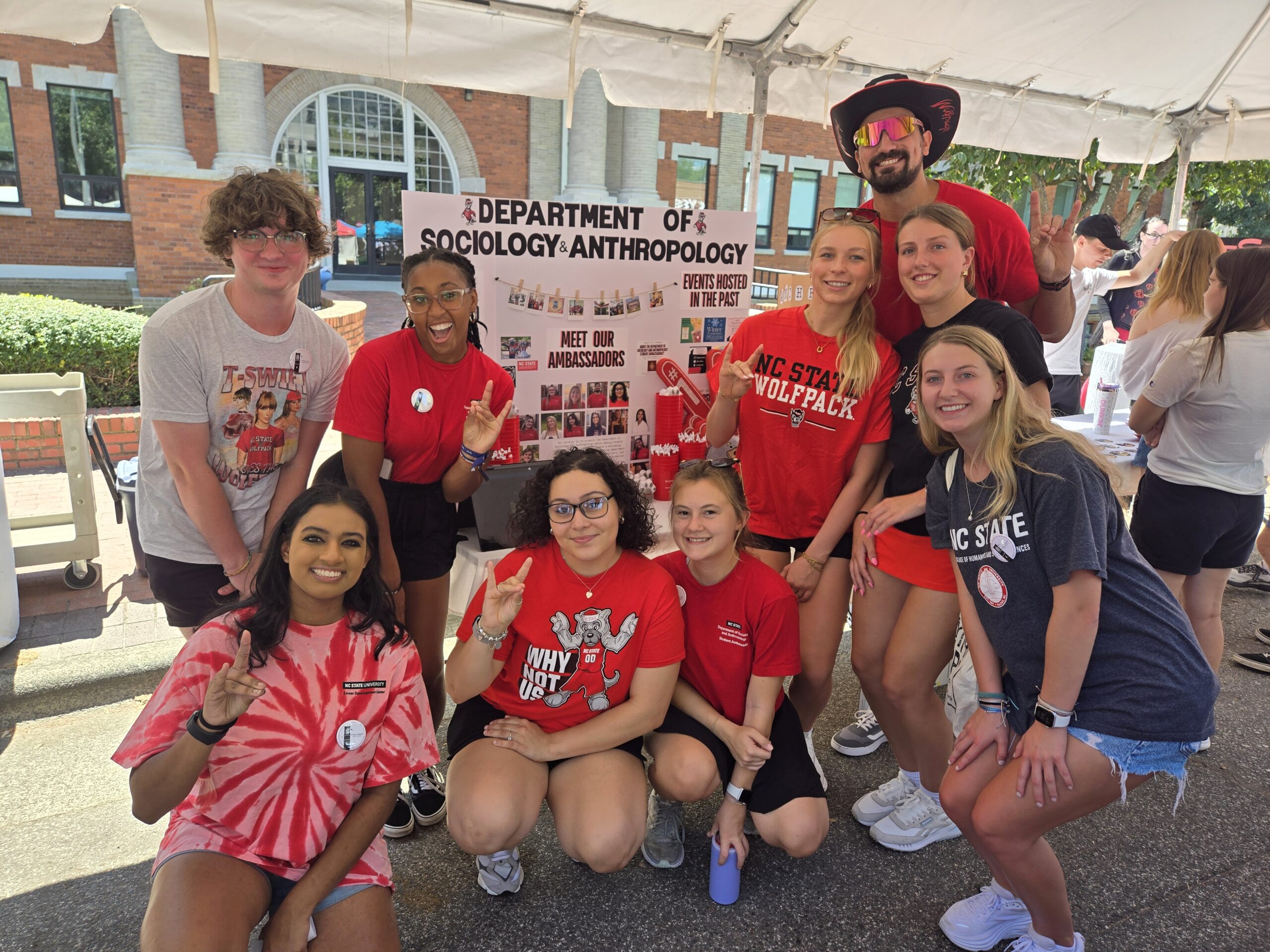Study Finds Law Enforcement Is Hampering Harm Reduction Programs in N.C.

For Immediate Release
In 2016, North Carolina enacted legislation providing legal protections to people who make use of programs designed to reduce harms associated with illegal drug use. However, a new study finds these legal protections are not recognized uniformly by law enforcement, raising questions about the extent to which the actions of law enforcement personnel are hampering the effectiveness of these programs.
“Harm reduction efforts, such as syringe services programs (SSPs), are scientifically proven to reduce overdoses and communicable diseases without exacerbating drug use,” says Jennifer Carroll, an assistant professor of anthropology at North Carolina State University and lead researcher on the study. “SSPs are also effective at linking people to substance use treatment, but harm reduction services are only effective if people feel safe using them. The goal of the legal protections put into place in North Carolina in 2016 was to save lives by ensuring that people could safely engage with these programs without fear of being charged with illegal syringe and paraphernalia possession. With that in mind, we wanted to know if people using SSPs since the passage of the 2016 legal protections felt that the protections were being honored by law enforcement.
“This study is not only relevant to North Carolina, but also raises important questions about whether similar challenges may be hampering efforts across the country. This is a particularly timely question, because a tremendous amount of money is about to be injected into counties across the country as a result of the Global Opioid Settlement, with the goal of reducing harms associated with opioids. SSPs are some of the key opioid mitigation strategies allowable under the global settlement.”
The study focused specifically on the experiences of SSP participants, meaning people who use drugs and seek harm reduction services such as access to sterile syringes, overdose prevention and response training, and other evidence-based public health tools – such as naloxone and fentanyl test strips.
“Our study focuses on the relevant experiences SSP participants have with law enforcement, but its findings do not explicitly address the impact those experiences had on their use of SSPs,” says Brandon Morrissey, a Ph.D. student at NC State and first author of the paper. “However, the findings do raise questions about the effectiveness of the existing legal protections – as well as whether law enforcement’s failure to acknowledge those protections is limiting the public health benefit of the SSPs.”
For the study, researchers surveyed 414 people from across North Carolina who make use of SSPs. The survey addressed a variety of issues related to study participants’ drug use, their use of SSPs and their related experiences with law enforcement. More than half of participants reported having “negative experiences” with law enforcement related to the implementation of the 2016 legal protections.
For example, study participants frequently reported that law enforcement officials said they weren’t aware of the law; refused to accept the documentation showing that the syringes or other supplies were from an SSP; confiscated the supplies participants received from the SSP; or arrested participants for having the supplies.
“Put simply, the benefit of harm reduction programs is severely handicapped when law enforcement officials confiscate clean needles or naloxone from people who have obtained those supplies from a state-recognized SSP,” Carroll says.
“Our findings show that, despite laws which protect SSP participants from charges, negative law enforcement experiences are still widely reported,” Morrissey says. “Evidence-based policy interventions to reduce fatal overdose are undermined by these experiences.”
The study also found that the behavior of law enforcement officials in regard to the 2016 legal protections varies tremendously from county to county.
“This suggests that law enforcement leadership at the local level is influencing how law enforcement officials interpret the legal protections,” Carroll says. “This, in turn, suggests that stronger state-level guidance is needed regarding how law enforcement should be implementing these legal protections.”
The paper, “‘They don’t go by the law around here’: Law enforcement interactions after the legalization of syringe services programs in North Carolina,” is published open access in Harm Reduction Journal. The paper was co-authored by Tamera Hughes of the University of North Carolina at Chapel Hill; Bayla Ostrach of Boston University; and Loftin Wilson, Reid Getty, Tonya L. Combs and Jesse Bennett of the North Carolina Harm Reduction Coalition. The work was made possible by funding from the University of Baltimore’s Combating Overdose through Community Level Intervention program.
-shipman-
Note to Editors: The study abstract follows.
“‘They don’t go by the law around here’: Law enforcement interactions after the legalization of syringe services programs in North Carolina”
Authors: Brandon Morrissey, North Carolina State University; Tamera Hughes, University of North Carolina at Chapel Hill; Bayla Ostrach, Boston University; Loftin Wilson, Reid Getty, Tonya L. Combs and Jesse Bennett, North Carolina Harm Reduction Coalition; Jennifer J. Carroll, North Carolina State University and Brown University
Published: Sept. 27, Harm Reduction Journal
DOI: 10.1186/s12954-022-00690-w
Abstract:
Background: In 2016, the U.S. state of North Carolina (NC) legalized syringe services programs (SSPs), providing limited immunity from misdemeanor syringe possession when law enforcement is presented documentation that syringes were obtained from an SSP. This study explores the law enforcement interactions experienced by SSP participants since the enactment of this law.
Methods: This study used a convergent, mixed-methods design consisting of structured surveys and semi-structured interviews with SSP participants in 7 NC counties. Survey and interview data were collected simultaneously between January and November 2019. This survey was designed to capture demographics, characteristics of drug use, SSP services used, and past-year negative experiences with law enforcement (officer did not recognize SSP card, did not believe SSP card belonged to participant, confiscated SSP card, confiscated syringes, or arrested participant for possessing syringes). Semi-structured interviews explored lived experiences with and perspectives on the same topics covered in the survey.
Results: A total of 414 SSP participants completed the survey (45% male, 54% female, 1% transgender or non-binary; 65% White, 22% Black, 5% American Indian/Alaskan Native, 8% some other racial identity). 212 participants (51.2%) reported at least one negative experience with law enforcement. Chi-square testing suggests that Black respondents were more likely to report having experienced law enforcement doubt their SSP card belonged to them. White respondents were more likely to report confiscation of card, confiscation of harm reduction supplies, or arrest. Interview data indicates that law enforcement practices vary greatly across counties, and that negative and/or coercive interactions reduces expectations among SSP participants that they will be afforded the protections granted by NC law.
Conclusion: Despite laws which protect SSP participants from charges, negative law enforcement experiences are still widely reported. Evidence-based policy interventions to reduce fatal overdose are undermined by these experiences. Our findings suggest NC residents, and those that enforce these laws, may benefit from clarification as to what is required of the documents which identify participants of the registered SSPs where they may legally obtain syringes. Likewise, commensurate trainings for law enforcement officers may be merited. Further research is needed to assess geographic differences in SSP participants’ law enforcement interactions across race and gender.
- Categories:


